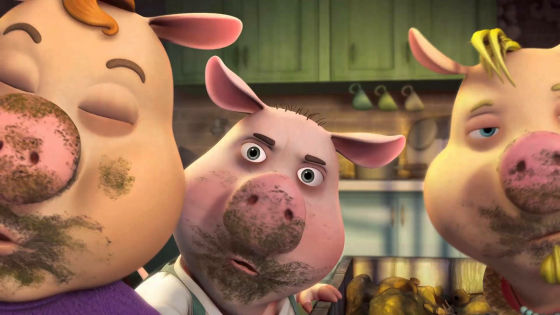Children enjoy the story while being able to train the brain most is "picture books"

Many effective tools for children's emotional education have been proposed, but research has revealed that "picture books" are extremely excellent in brain network strengthening.
New studies measure screen-based media use in children | EurekAlert! Science News
https://www.eurekalert.org/pub_releases/2018-05/pas-nsm042618.php
What's Going On In Your Child's Brain When You Read Them A Story?: NPR Ed: NPR
https://www.npr.org/sections/ed/2018/05/24/611609366/whats-going-on-in-your-childs-brain-when-you-read-them-a-story
"Three bear bearsIs good! "Parents accused by children are worried about which" media "should be used, such as picture books, audio CDs, and reading by Amazon's Alexa. In modern society, because there are many choices of tools, it suffers from the optimum method.
Dr. John Hutton of the Cincinnati Children's Hospital investigated what kind of difference the influence the child's brain has on each medium when enjoying the same story. Dr. Hatton played back the story in three ways, "voice only", "with audio" and "animation" to 27 children around the age of 4, and measured the state of the brain at that time with fMRI. All three contents are "Robert Munch"The official website story is used.

Dr. Hatton analyzed four kinds of networks, "language" "visual", "visual image", "default mode", in the state of the brain. "Default mode" relates to inner reactions that are relevant to you, and explained by Dr. Hatton that it is activated when not concentrating on changes in the outside world.
As a result of the electroencephalogram measurement by fMRI, we found that the language network was very activated in "voice only", but overall the network connection was weak. About the state of the brain in case of voice only Dr. Hatton expresses it as "too cold". In the case of voice only, there are signs that children are under stress to understand the story.
On the other hand, Dr. Hatton expresses "animation" as "too hot (too hot)". Activation was confirmed in the auditory and visual networks with animation, meanwhile, there was no cooperation with other networks of the brain. As a result of the use of a lot of energy in what the motion in the animation means, the story's understanding of the contents seems to have been the worst among the three patterns.

The best result was "illustration". Children 's brains with illustrations with sounds showed slightly less activation of the language network than in the case of only voice, but the connectivity of the whole network such as visual, visual image, default mode etc It was confirmed that it was improved. While paying attention to the words, it has also been confirmed that the illustration became a clue and the understanding of the whole story increased.
According to Dr. Hatton, in the brains of children 3 to 5 years old, the visual image and the network of the default mode will mature later, and will be able to integrate with other brain networks through training. It is pointed out that if you show excessive animation to children in this period, opportunities to grow visual images and default mode may be missed. Dr. Hatton thinks that if you are exposed to lots of languages without sufficient training you will not be able to develop the ability to visualize what you read, eventually becoming a child with "dislike of reading".
Although a concrete analysis has not been conducted under the constraint of experiments using fMRI, according to Dr. Hatton, the best "illustration with sound" is "reading" with the child sitting on the lap Let me hear that ". In reading stories, communication through dialogue reading is not limited to the four networks analyzed in this experiment, but it has a good effect on the whole brain, so again, "picture book" which can read aloud more than audio and animation It seems that tools like such are excellent for developing children's brains.

Related Posts:
in Science, Posted by darkhorse_log







